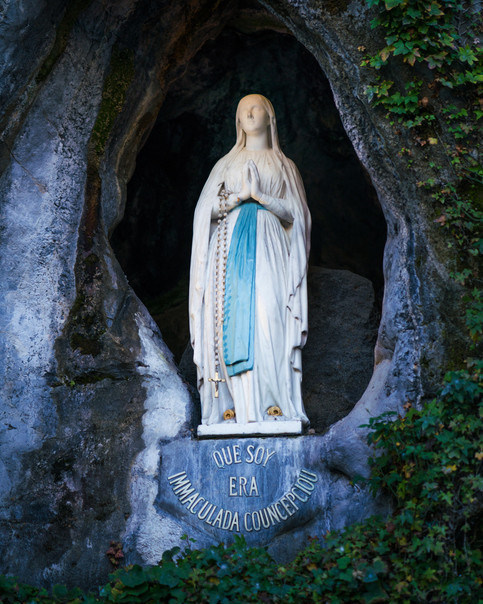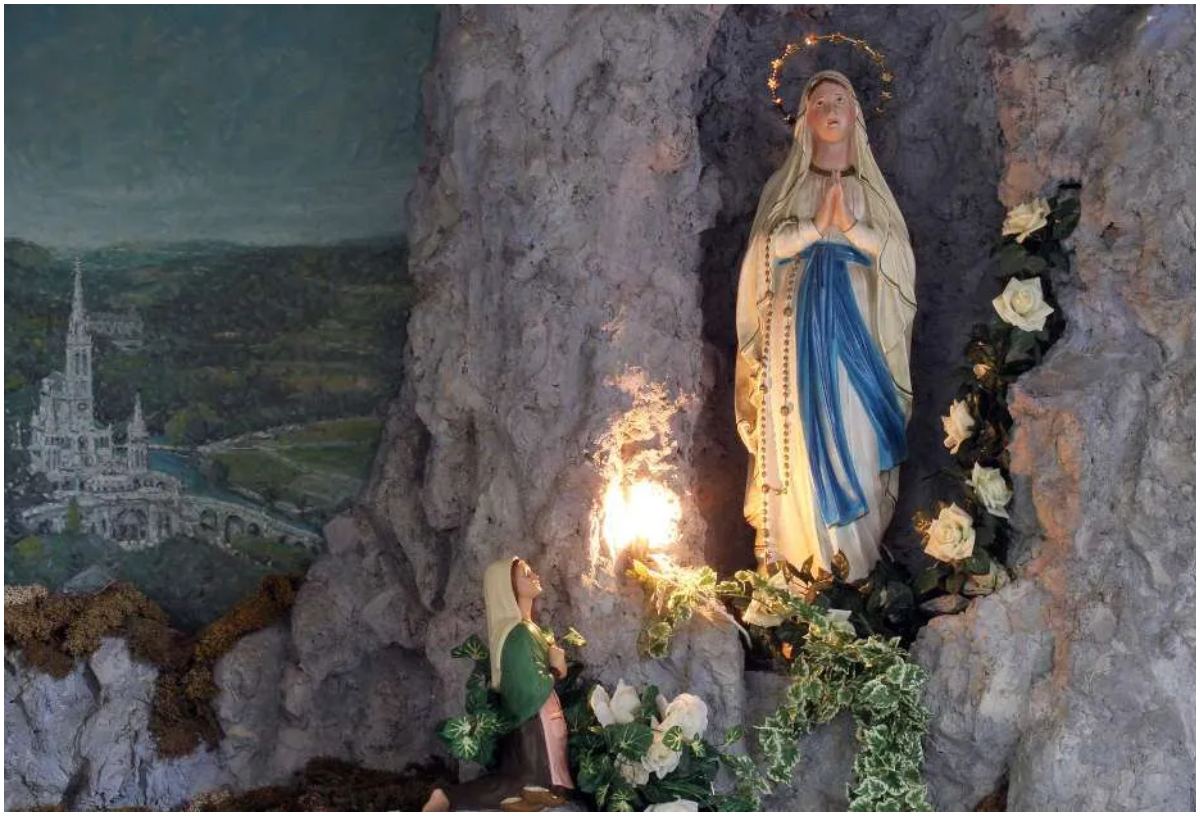On Tuesday the Church celebrated the feast of Our Lady of Lourdes. Although not officially one of the major feasts in the Church’s year, the feast of Our Lady of Lourdes holds particular resonance for many.
Firstly, as a school dedicated to Notre Dame, Our Lady, any of the feasts associated with Mary the Mother of God are occasions for celebration. There are several such feasts: Mary, Mother of God (1 January), Annunciation of the Lord (25 March), Our Lady of Fatima (13 May), Visitation of the Blessed Virgin Mary (31 May), Our Lady of Mount Carmel (16 July), Assumption of the Blessed Virgin Mary (15 August), Our Lady of Sorrows (15 September), Our Lady of the Rosary (7 October), Immaculate Conception (8 December), and Our Lady of Guadalupe (12 December) are just some examples. Here at Notre Dame the most important Marian feast we celebrate is the Presentation of the Child Mary in the Temple (21 November) – the feast chosen by St Jeanne as the feast day for the children in her first school and all subsequent Company of Mary Our Lady schools.
Secondly, the feast of Our Lady of Lourdes is a significant feast because of personal connections that many people have with the French town of Lourdes. Every year, approximately 6 million people visit Lourdes.
Lourdes was the place where, in 1858, Our Lady appeared 18 times to a poor and sick child, Bernadette Soubirous. During the course of these apparitions Our Lady gave Bernadette several instructions, including that she should tell the parish priest to build a church so that people could come to Lourdes to pray and to wash in the waters. Bernadette was a young girl, and as a result of her sickness, not well-educated. She told the priest what she had been told but was not believed. Local authorities tried to prevent her going back to the place where she had seen Our Lady. Family were worried about her. Yet despite the attempted influence of her elders, Bernadette continued to return to the grotto where she had seen Mary. On one of the final visits Our Lady said to Bernadette, ‘I am the Immaculate Conception’. Bernadette had never heard these words before, but repeated them to the priest. The priest knew that Bernadette could not have been making these words up and he knew what they meant; he knew that the woman Bernadette had seen was Mary.
There is so much that we could learn from the experience of Bernadette. She was poor and she was sick and God chose her and blessed her in a very particular way. She was not put off by the fact that she was young and older people were influence her in a way with which she was not comfortable; she remained faithful to the commitment that she had made to Mary.
After the final apparition Bernadette left Lourdes and entered a convent in Nevers, in the centre of France. She wanted some seclusion and to dedicate the rest of her life to serving God through prayer. She absolutely did not want any celebrity status; for her the apparitions were all about Mary, Mother of God, not about Bernadette. She was humble and she was holy.
Among the 6 million people who visit Lourdes every year are pilgrims from our own Diocese of Arundel and Brighton. I wrote recently to all Year 10-13 parents to encourage parents and their daughters to consider participation in this annual pilgrimage. When I speak with students, parents, staff or others about Lourdes I do so from personal experience of seven pilgrimages, assisting pilgrims who without help would not be able to make the pilgrimage on their own. Those seven weeks were amongst the very happiest and most memorable of my life. For me, like many many people around the world, 11 February, Our Lady of Lourdes, is a special date in the calendar.










